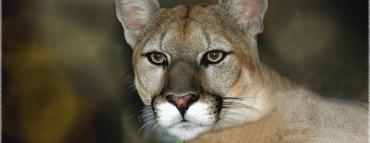
The Florida Department of Transportation has agreed to install wildlife exclusionary fencing along what is called the deadliest stretch of road for Florida panthers -- the nine miles of Alligator Alley from the FakaUnion Canal Bridge to the Naples toll booth.
Since 2004, says the Florida Wildlife Federation, spirit behind the FDOT fencing, there have been 14 Florida panthers killed by collisions with vehicles. The nine-mile segment is the only section of Alligator Alley without wildlife exclusionary fencing.
In all this year, 23 Florida panthers have been killed on Florida highways. But where fencing and underpasses are installed, the deaths drop to almost zero, FWF says.
FDOT's agreement to add wildlife protection to the east-west highway through the Everglades comes as the result of a study commissioned by the Wildlife Federation.
In April 2015 the Federation, alarmed by the increasing panther death count, commissioned the study by transportation ecologist Daniel Smith.
According to a FWF press statement released Thrusday, Smith recommended fencing the nine miles and improving wildlife movement under the Miller and FakaUnion Canals. He suggested new wildlife underpasses between the Miller Canal Bridge and Naples toll booth.
In the statement, Manley Fuller, president of FWF, said, “Florida Wildlife Federation is very pleased with FDOT’s swift and optimal action to address panther deaths on Alligator Alley."
FDOT Secretary Jim Boxold expressed appreciation to Florida Wildlife Federation “for bringing this concern to our attention” and stated “FDOT supports Florida Panther recovery efforts.”
In addition to the exclusionary fencing, FDOT will reset the existing rubble riprap under the west side of the FakaUnion Canal Bridge and both sides under the Miller Canal Bridge to create a 2-foot-wide pathway for wildlife use.
“It is important to maintain habitat connectivity for panthers and other wildlife because Picayune Strand State Forest is on the south side and Collier County’s North Belle Meade Natural Resource Protection Area is on the north side of this currently exposed stretch of Alligator Alley I-75,” said Nancy Payton, Southwest Florida Field Representative who spearheaded Florida Wildlife Federation’s successful campaign.
The iconic Florida panther, official state animal and star of Florida's fifth most popular license plate, has been on the U.S. Endangered Species List since 1967. They once roamed across the entire southeastern United States. According to the FWF, the only breeding population, estimated at 180 animals, is in South Florida.
But a group of hunters and outdoorsmen in Southwest Florida disputes the FWF claim that Florida panthers are anything more than pumas at this point and should be stricken from the Endangered Species List.
"One of the last two known Florida panthers died in 2011, struck by a car, as is the fate of most panthers these days," Michael Elfenbein, 38, of Port Charlotte, something of an authority on the animals, said in an email last May. "The second known Florida panther, FP113, was 11 years old when she was last photographed in 2013. Her existence today is not likely."
Glades County Commission Chair Donna Storter Long, a lifelong Florida resident, is another who doesn't believe Florida panthers belong on the Endangered Species List. "Florida panthers should be removed ... because there is no Florida panther," she has said.
Florida Fish and Wildlife Conservation Commission admits panthers barely escaped extinction, when in the mid-1980s there might only have been 30 left. What the government did next to help push the panther population back up to today's situation is either lauded as a huge success or decried as a monumental mistake.
In 1995, eight pumas from Texas were released and bred to give genetic variation to the small, inbred panther population that was left in southern Florida.
Said Long, "Lists of animal species that are diminishing, endangered and threatened by possible extinction should not include panthers in Florida because these animals are no longer 'Florida panthers;' factually and publicly known they are progeny of animals imported from another state where they are not even close to being endangered."
The government entirely disagrees with the Glades commission chair. A statement from USFWC reads, "Florida panthers are still Florida panthers. Genetic restoration has mimicked what used to occur naturally before the loss of extensive amounts of habitat. You could make the case that the genetic restoration program actually has resulted in Florida panthers that are more similar to those that historically inhabited the southeast U.S. prior to isolation in Florida."
When contacted Thursday morning, transportation ecologist Smith was driving and told Sunshine State News he was unavailable to discuss his report.
Reach Nancy Smith at nsmith@sunshinestatenews or at 228-282-2423. Twitter: @NancyLBSmith


